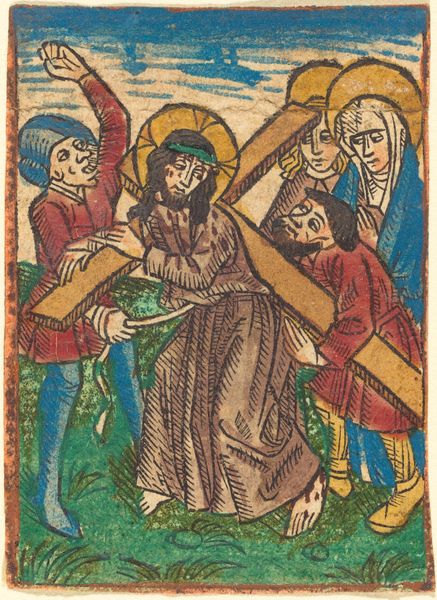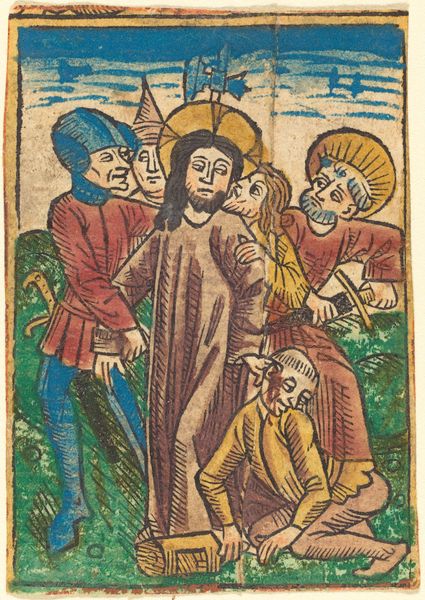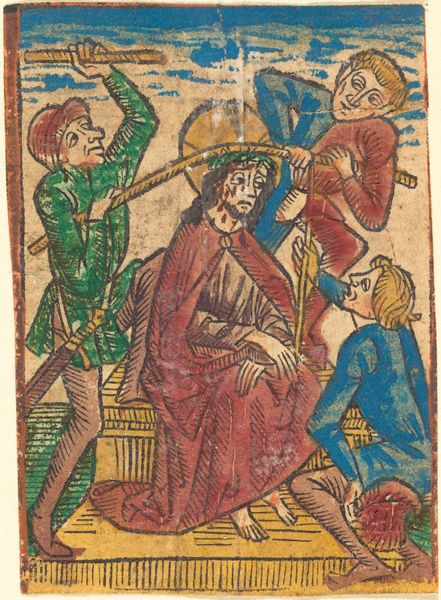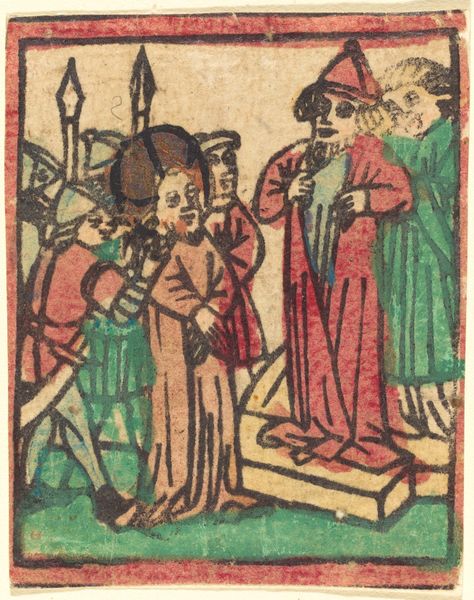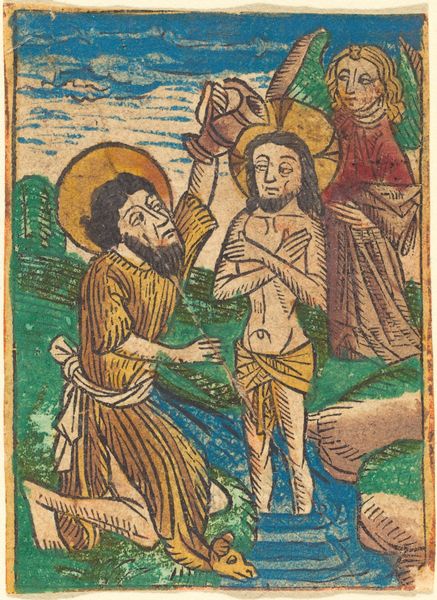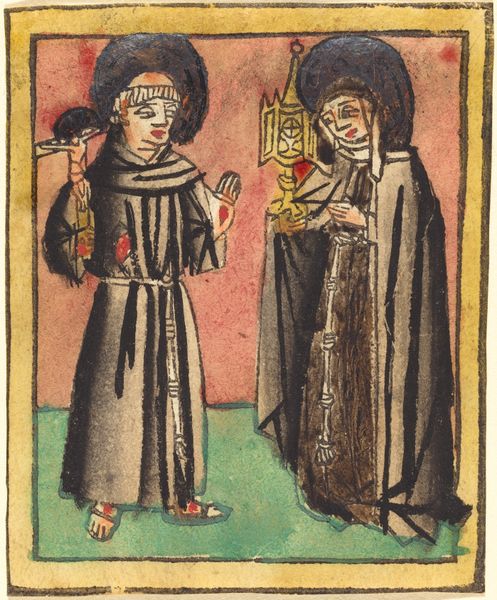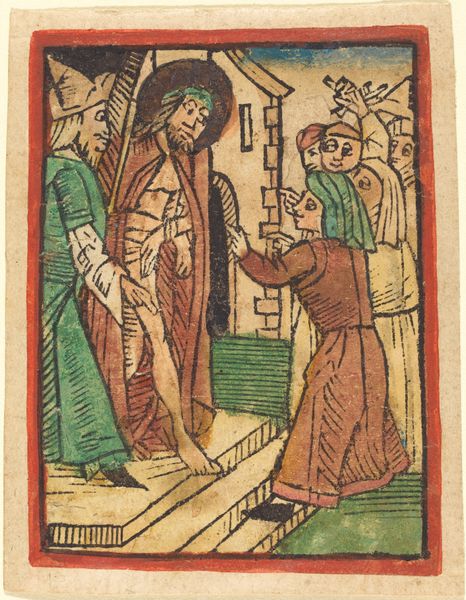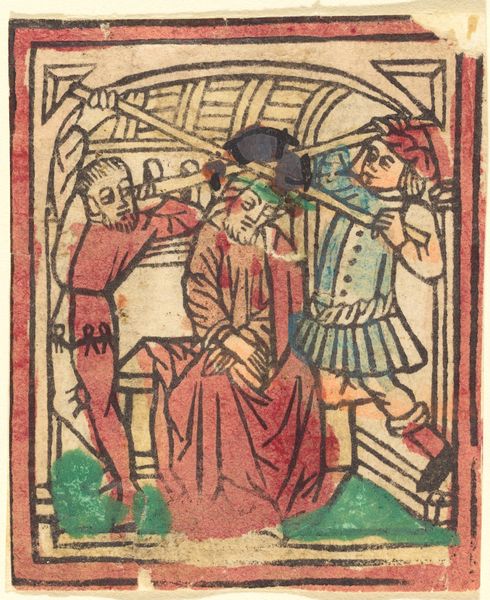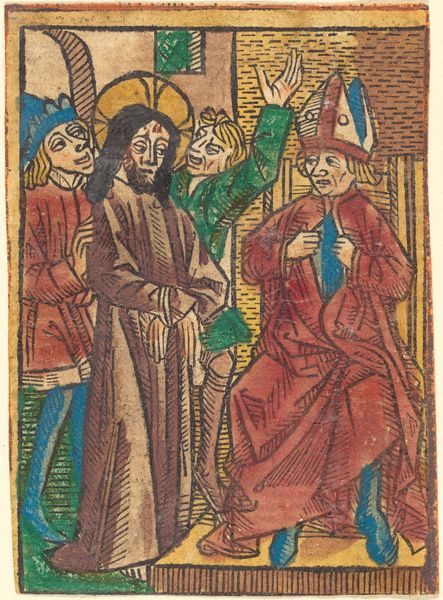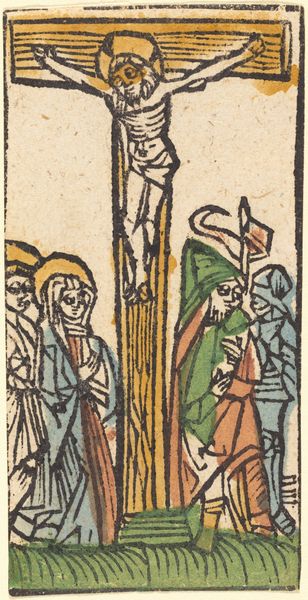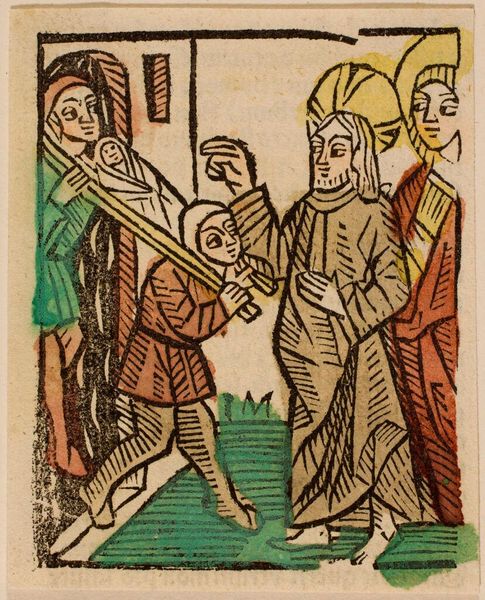
print, woodcut
#
medieval
#
narrative-art
# print
#
figuration
#
woodcut
#
history-painting
#
early-renaissance
Copyright: National Gallery of Art: CC0 1.0
Curator: Take a moment to consider this print, "Christ before Pilate," a woodcut made around 1490 by an anonymous artist, offering a fascinating glimpse into the late medieval era. Editor: It strikes me as deeply unsettling, really. The cramped composition, the faces leaning in…it almost feels like a prelude to violence rendered on a tiny scale, what about you? Curator: The scene pulses with the tension inherent in its subject. The iconographic traditions at play here are potent: Christ, the meek figure, faces the authority of Pilate, embodying worldly power and judgment. These archetypes are loaded with centuries of theological and emotional meaning. Editor: It's incredible how much drama is wrung from a humble woodcut. Look closely at the process: a block of wood meticulously carved away to leave these lines, which were then inked and pressed onto paper. Imagine the physical labor involved in making multiples of this scene of political maneuvering and ultimate sacrifice. Curator: Yes, the medium serves the message. The woodcut’s lines, though simple, powerfully convey the narrative. Note how light and shadow are used to highlight Christ, making him almost radiant despite his apparent humiliation. Editor: And the hand-coloring – rudimentary yet effective – draws our eye to the vivid blue leggings and jaunty hat. This reminds us that this print functioned as both a devotional image and a crafted object consumed in its time. It raises the question of how and by whom it might have been commissioned and sold? Curator: I'm particularly drawn to the symbolism of Pilate's gestures, the turning of his palms outwards, almost washing his hands before us, the viewer, implicating all of us in the events unfolding. Editor: Thinking about the labor of its creation versus its potential distribution opens up intriguing paths of investigation of this early printed artwork! Thank you! Curator: A fruitful exchange; reflecting on this visual story is, indeed, an engagement with a cultural keystone.
Comments
No comments
Be the first to comment and join the conversation on the ultimate creative platform.

